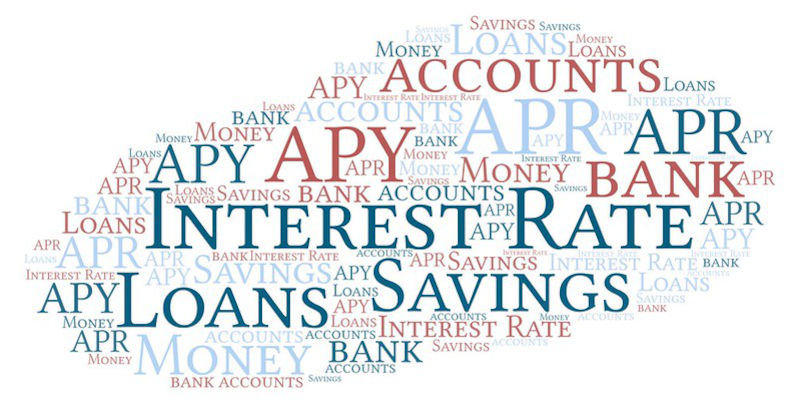
Inflation is outside the target zone in all developed economies. Central banks are responding by increasing interest rates. But the critical question is whether monetary policy can bring inflation down without causing a recession.
The latest data for countries’ consumer price indexes, show inflation running at over 8 percent in the US, 9 percent in the UK, 8 percent in the Euro area, nearly 7 percent in Canada, and 5.1 percent in Australia. By comparison, their inflation targets are typically around 2 per cent, and 2-3 per cent in Australia.
The central banks have responded to this increase in inflation by significantly increasing their interest rates in the last two months. The US Federal Reserve increased its funds rate by a huge 0.75 percentage points to 1.75% at its June meeting, the Bank of England current base rate is 1.25%, the European Central Bank has signalled that it intends to raise its interest rates by 0.25 percentage points in July and expects to raise them again in September, and in the last two months the Reserve Bank of Australia’s cash rate has increased from 0.1% to 0.85%. Furthermore, all these official interest rates are expected to increase further.
Thus, the central banks are clearly signalling their determination to bring inflation down and back into their respective target zones. But the speed and size of the prospective monetary tightening in response to the higher inflation has increasingly led to economists discussing whether there will be soft landing. In other words, can inflation be brought down and back to normal without engendering a recession.
Naturally the authorities think they can achieve both lower inflation and avoid excessive unemployment. But they would think that – wouldn’t they.And history is not on their side. In the early 1990s the then Governor of the Federal Reserve, Paul Volker, is credited with restoring price stability in the US, but it came at the cost of unemployment climbing to an average of 7.5 per cent in 1992.
Similarly in Australia, despite the best efforts of the Hawke Government’s Prices and Incomes Accord, inflation in Australia was only really defeated by “the recession we had to have”. Very tight monetary policy was implemented from the beginning of 1988, peaking two years later when the RBA’s cash rate reached 17% in January 1990, and unemployment peaked at 11.2% in late 1992.
Returning to the present, a lot depends on how temporary the surge in inflation proves to be, and therefore how readily it can be brought down. Most importantly, the outlook for future inflation depends critically upon whether or not higher inflation has become embedded in peoples’ expectations. In effect, a sort of tipping point is reached where inflation becomes sufficiently high and embedded that people expect that it will continue. People then modify their behaviour, including by increasing their wage demands, and setting off a wage-price spiral.
Above this tipping point it is very difficult to bring inflation down without a significant increase in unemployment; in other words, a recession. But before this tipping point, where people do not expect inflation to continue, let alone get higher, it may well be possible to return to a lower rate of price increase without inflicting a full-blown recession.
Up till now there was a widespread view that the causes of the recent surge in inflation were only temporary. Initially it was not thought that the key sources of higher prices would last long: namely the supply shortages resulting from the Covid-19 pandemic, the Russian invasion of Ukraine and the latest severe lock-down in China.
But of course, the longer these supply shortages and the associated price rises continue, the greater the risk that rising prices will become embedded in peoples’ expectations. Clearly the central banks now consider that the risks have reached the point where they need to react by increasing their interest rates.
The principal danger is that workers will increase their wage demands as inflation accelerates so that they can protect their living standards. But so far wage growth is continuing to lag the rate of inflation and real wages have been falling. Living standards were however maintained through the first two years of the Covid pandemic as governments massively increased social assistance. For example, in the US, between March 2020 and December 2021 households received an additional $1.6 trillion in disposable income above and beyond the previous trend, mostly through government transfers.
Similarly in Australia, during the pandemic the Morrison Government sought to protect peoples’ living standards by increasing social assistance – by as much as 15.3 per cent in 2019-20 and another 11.9 per cent in 2020-21. As a result, real household disposable income per capita, increased substantially by 6½ per cent between December 2019 and December 2021, despite Australian real wages falling by around 3½ per cent during the Covid pandemic.
Furthermore, much of this government assistance during the pandemic was saved in both the US and Australia, and these savings are now available to help support household consumption. Consequently, households are not yet feeling the full impact of negative real wage growth, and this may affect their wage demands.
But even if we look further ahead, it is noteworthy that for more than a decade several countries have experienced wage stagnation. In Australia’s case, at least, some economists (including me) are sceptical that low wage growth can be fully explained by the level of unemployment. Instead, there have been other structural and institutional changes impacting the labour market that have led to wages growing more slowly even when the labour market is fully stretched.
It is true that the minimum wage has recently been raised so that it is maintained, for the moment, in real terms. But only 2% of workers were covered by that decision. For another quarter of employees, the increase awarded meant some decline in their real wage.What is also noteworthy about this decision is that without it, the rate of increase in award wages might well have been even less. Thus, despite the tightness of the labour market at present, wage growth for people on awards may well have not been sufficient to maintain their real wages.
That further suggests that the prospective wage increases are also likely to be less than inflation for the other three quarters of the labour force whose wages are set by enterprise agreements or individually. Furthermore, if wage increases are generally less than the inflation rate over the next year or two, then the chances of setting off a wage-price spiral must also be low.
Thus, Australia does not yet seem to have reached that tipping point where people expect high and continuing inflation and lift their wage demands accordingly. As the Reserve Bank Governor put it last week, “To date, medium-term inflation expectations have been well anchored at around 2 to 3 per cent, suggesting that people believe we will get back to target.” That means that there is a reasonable chance that the Reserve Bank can succeed in getting inflation back into its target range without a recession. The Bank will, however, need to be cautious that it does not push interest rates too high for too long.
There is a real risk of a shortage of demand emerging if wages are stagnating and households and businesses have used up their present high levels of savings. In addition, high interest rates will impact particularly severely on Australian households which are carrying exceptionally high levels of debt.
In sum, the Reserve Bank is right to start to lift its interest rate, but it will need to be cautious about how far and for how long. It is good that the Bank does not have a pre-set path and will be guided by incoming data and its assessment of the outlook for inflation and the labour market.




